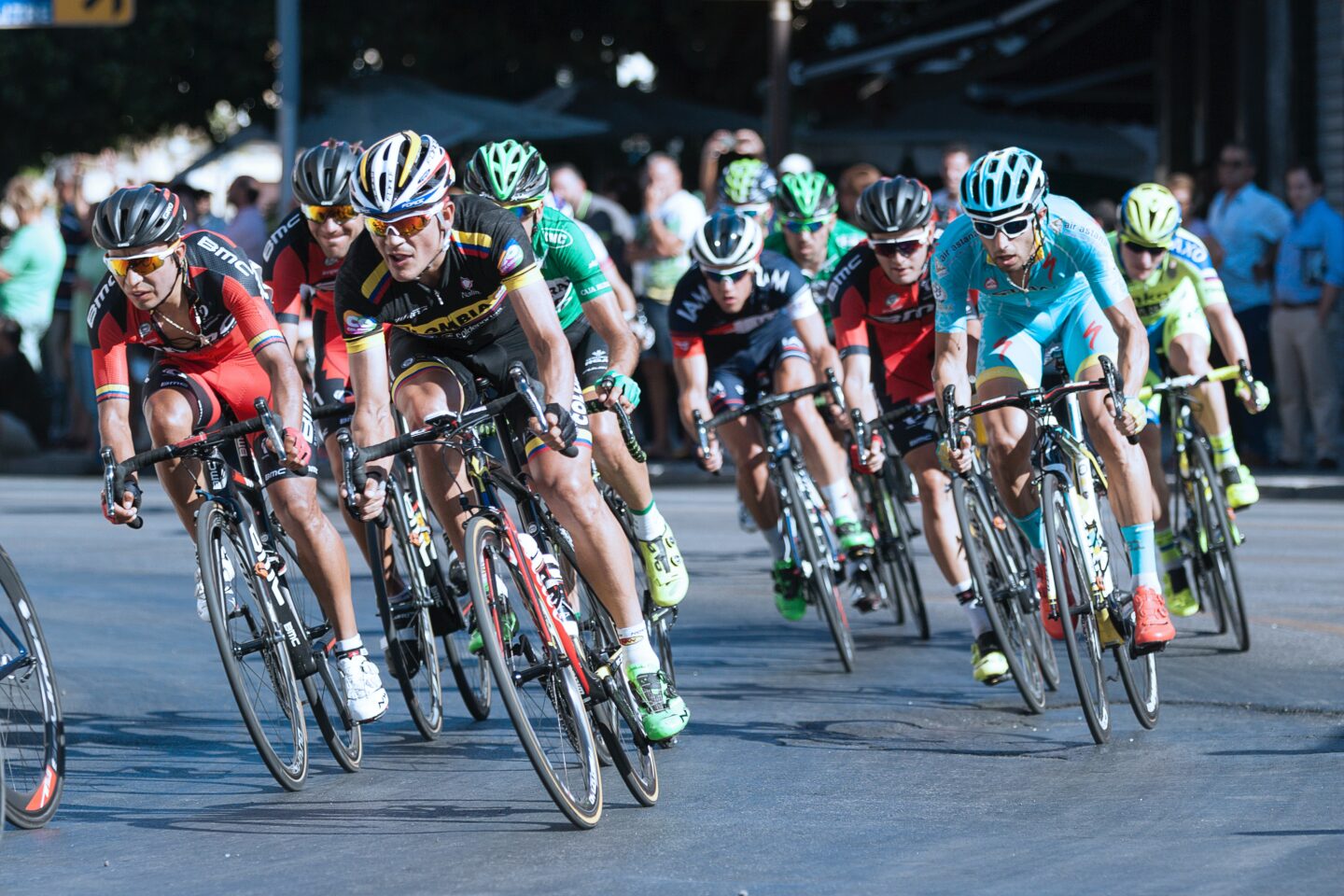It’s the night before the big race and you’re having trouble sleeping. It’s the morning of the race and you can’t look at your breakfast without feeling nauseated. Now you’re on the start line and your palms are sweating and you’re a nervous wreck.
Welcome to the world of competition stress.
Dr. Richard Lazarus famously defined stress as a relationship between the person and the environment that is “appraised by the person as taxing, exceeding resources, and potentially endangering his or her well-being.”
Hopefully any stress you feel toward racing isn’t caused by feelings of danger. Rather, your stress is likely due to feelings of anxiety about your state of preparedness or other factors that feel out of your control. Regardless of the cause, experts agree the most beneficial way to improve stress management is to better understand stress.
“Stress is normal, but we need to gain clarity on our sources of and contributors to stress,” says Dr. Chow, a mental performance consultant. “For each of us, they are very different and individual. It is hard to reduce stress if we don’t know where it comes from or what triggers it.”
Let’s explore the reason we feel stress, the many potential causes of stress, and the various ways we can reduce it.
Stress is neutral
First, it’s paramount to understand the notion that stress is neutral. It’s our individual perception—how the brain interprets a situation—that deems it negative or positive and, thus, elicits a stress response or not.
The brain uses the two branches of the autonomic nervous system—the parasympathetic and the sympathetic—to determine an appropriate response to the perceived stimulus. When we perceive a stimulus as threatening or scary, it triggers our sympathetic (fight/flight) nervous system. But when we perceive a stimulus as non-threatening, it triggers our parasympathetic (rest/digest) nervous system.
“Nerves are telling you something important is going to happen,” says Dr. Michelle Cleere, a globally recognized performance coach. “But we interpret the same thoughts and feelings in different ways.”
For example, when Dr. Cleere works with athletes who get nervous before races, she might use this tactic: She asks them if they like rollercoasters and, if so, what feelings they feel while waiting in the line. They might say they feel excited and psyched. However, this athlete might experience these exact same thoughts and feelings before a race, but in this case, interpret them as trepidation.
“We then talk about how to re-interpret nerves as being closer to excitement,” she says. “I like to give an example about how nerves can be interpreted in different ways and that we have the ability to interpret them in different ways.”
Stress is not always negative, but it’s necessary
It is also important to understand that stress does not have to be seen as completely negative. In athletics, a healthy threshold of stress is necessary for optimal performance. With this healthy threshold, it is not an all-or-nothing or absolute scenario.
Different sports warrant a different threshold of stress to perform optimally. For example, a mixed martial arts fighter and a golfer will have very different stress needs. Additionally, each individual athlete approaches preparation for competition differently to attain their ideal threshold of stress. Some use loud music to hype up, while others prefer a quiet, more meditative and calming approach to prepare.
If we can teach ourselves to view stress differently—to not fear it or categorize it as negative, but see it as a necessary ingredient to performance—this will allow us to respond differently to it.
As athletes, we can’t expect to avoid stress or the pressure of competition that contributes to stress—it comes with the territory. The famed tennis player Billie Jean King said it perfectly: “Pressure is privilege.”
Maybe, in some ways, this is why we gravitate to sport. It makes us feel stimulated and alive. Once we have changed our perspective on stress—from resisting it to accepting it—then we can take the next step in managing it by determining our individual strategies to maintain a healthy threshold of arousal.
Contributors to stress
Total stress load is the combination of all life stressors including:
- Lifestyle stress (interpersonal, financial, etc.)
- Emotional stress
- Training stress (physiologic, metabolic, emotional)
- Competitive stress (physiologic, metabolic, emotional)
While, as athletes, we deal with the metabolic and physiologic stress of training and races, experts say that interpersonal situations and future thinking generate most of our emotional stress.
However, the various sources of stress are not compartmentalized—all sources contribute and accumulate into the same bucket. A 2010 Australian study clearly demonstrates how the unchecked accumulation of stress can negatively influence athletic performance. Interestingly, this study showed that when the training load stayed constant but mental stress increased, athletes became over-trained.
When we don’t have good stress management in place, accumulated and unchecked stress takes its toll on mental and physical health. This can lead to, among other things: hormonal imbalance and dysfunction; negative impairment of the immune system and metabolism; and inhibit cell growth and repair.
Additionally, chronic stress can lead to weight gain, muscle tension and pain, anxiety, depression, and sleep problems.
How to prevent stress during training and racing
A 2012 Finnish study, involving an intensive two-week training program, compared a group of individuals with self-rated high stress who had limited psychological resources to mitigate stress with a group with low stress and numerous psychological resources to combat that stress.
The high-stress group showed no increase in cycling power because of the two-week training program. However, the low stress group improved power by 19 percent.
Here are a few things to consider that might help you alleviate stress when it comes specifically to training and racing.
Rest is training
To specifically address and manage training stress, remember that improved fitness follows this formula: fitness = training stress + rest.
More fitness does not happen with more stress. Keep training stress in check and the training stress to rest/recovery account in balance with scheduled and dedicated rest days within blocks and rest periods at the end of multiple-week training blocks.
We need to be as diligent in respecting these rest/recovery days and periods as we are about our hard training sessions. Beyond devices and data, this is the best insurance to ensure our body can absorb the hard training, and repair and rebuild to take a step up in fitness and performance.
Competitive stress
Races are exponentially stressful, emotionally and physically. Thus, races demand and entail:
- Planning
- Traveling
- Self-induced pressure to perform
- Significantly high intensity effort
To manage this stress, it is valuable to remember that more racing is not better, and can be detrimental to overall fitness and performance. We want to be selective and make our race days count. Select races that leverage your strengths, and mentally and physically motivate and inspire you.
Also, reconsider the racing-for-training concept. Often, when athletes do this, they go in with this mindset of using the race for training and, as such, are not ideally mentally and physically prepared for the race. But then they become disappointed with the outcome and, as a result, they beat themselves up mentally when they don’t perform.
This approach adds more stress to the bucket. In this situation, it is often more productive to keep it simple, and hit a local fast-paced group ride to get that dose of high intensity and sense of unpredictability that comes with racing. This opportunity keeps the stress level low, but the return-on-training investment high.
Change your perspective on competition
“Reinterpreting an event can have a profound effect on how we feel about the event,” Dr. Chow says. “If we interpret an upcoming race as scary, then our mind goes that way. But if we interpret it as a challenge and opportunity, we change it from something we have to do, to something we get to do, and as a result of this shift, we will likely perform better.”
When you shift your perspective on racing from being a proving ground to learning ground it alleviates stress. Think of racing as your best opportunity to learn and improve. Racing is the best form of feedback to identify strengths and weakness to inspire more focused and purposeful training.
We don’t necessarily have to view races as a place to compare and compete against fellow racers. But we can see our fellow racers as helping us race harder and faster, and technically better, than we could possibly do on our own. This change in perspective helps alleviate the heaviness of pressure induced stress and sets you free to tap new performance potential.
Control those things you can control
“People seem to think of self-care and things like sleep as separate from high performance, but they are part of it,” Dr. Chow says. Consistent healthy habits are a way to manage stress and fuel performance. They go hand-in-hand and develop a sturdy foundation that improves your durability and resiliency.
Also, as Dr. Chow points out, most of our time is spent not competing in our event. This is the time that is in our complete control and if we do it right, we can manage and control factors outside competition that will allow us to show up on race day as the best version of ourselves.
There are several simple but effective ways to enhance self-care, manage stress, and improve performance. These include:
“We need to help athletes shift their perspective on these things and understand that they are not nice-to-haves but need-to-haves,” Dr. Chow says.
Maximize the training opportunity
Use training to develop your mental strategies and mindset to not only contend with the high intensity race efforts (physiologic and metabolic stress), but the high emotional stress that accompanies competition.
Just like physical conditioning, mental conditioning takes consistent training and practice to develop command and confidence. During training is when and where you develop the confidence that you can contend with the mental and physical factors.
Use training to simulate as many of the race-like factors that you can. The more you train to know what to expect, the less stressed you will be in competitive situations.
Additionally, while every race situation is different, the more race-type experience that you gain, the more you will have a general idea of what to expect. This experience does not have to come exclusively at major races; mental and physical experience can be gained by doing:
- Fast-paced group rides
- Motor pacing and simulating the less controlled, unpredictable nature of racing and higher intensity
- Local training races
If you can maximize the opportunity to use training to make more of the unknowns known, the brain has a better grasp on what to expect, and as result you experience less stress.
Automate mindset with visualization
Additionally, we can use training as a mental and physical dress rehearsal. For example, during intervals, don’t just laser-lock on your power meter only thinking about ticking off the time.
Again, maximize the training session and enter an interval workout with greater intention and purpose. For example, mentally place yourself in a pivotal section of an upcoming race. Visualize this situation with as much detail as possible—sounds, sensations, sights. While doing the interval, develop your self-talk and meaningful mental mantra to focus the mind on something other than the stress and physical discomfort.
By giving the mind a more productive focus, it helps insulate you from the external disruptive environment. The more you do this in training, the more it acts as a dress rehearsal, and in similar race situations you will automatically default to these mental actions.
Use training to create routines to automate decision making. For example, get your equipment organized and gathered early in a race week, so you are not stressfully scurrying around last minute, running to the bike shop expending valuable energy.
Make as much of the decision-making process leading into race day as automatic as possible. This can be done by creating routines or rituals. Going into a race with a set routine helps take the thinking, analytical mind out of the equation and helps the mind stay focused and present.
Technology can help
Technology can lead to better decisions. This, in turn, can help you manage and reduce stress so you more effectively reach your goals.
For example, one of the hardest things for athletes to do is rest. Until recently, understanding how much rest you needed hinged entirely on subjective sensations. This is where new technology, like HRV monitoring, can come in handy. It can provide data for why you are feeling a certain way.
Most of the time athletes need a neon, blinking red light to help them know they need rest, and HRV can help brighten that light. Furthermore, while HRV is known to measure the interaction of the autonomic nervous system, it can also help us indirectly predict cortisol levels. In this case, there is an inverse relationship between cortisol and HRV—as HRV drops, cortisol increases.
While it is a useful tool, we need to keep perspective on this technology—it is still not entirely accurate, and this data should be used more as a back-marker in terms of how you are feeling. HRV is very individual and there are no absolutes in terms of analyzing this data. It takes time and a significant amount of data collection to understand your unique individual patterns and nuances.
While these devices have greatly improved in recent years, there is a varying degree of veracity within the available consumer wearable devices. This data should inform better decision-making rather than dictate decision-making.
The final word
Mental conditioning, skills, and strategies to manage stress take as much training and practice as do physical attributes. Use daily life and training to hone this conditioning and skill set. Additionally, when you change your perspective on how you perceive stress—as not scary but necessary—you have greater command over it.
One of the first steps in managing stress is understanding your sources of stress and situations that trigger it. Then you must take time to develop your individual resources and train the strategies that allow you to cope with and manage stress. Only then will you gain a sense of command and control over stress.
References
- Main, L., Landers, G., Grove, J., Dawson, B., & Goodman, C. (2010). Training patterns and negative health outcomes in triathlon: longitudinal observations across a full competitive season. Journal of Sports Medicine and Physical Fitness, 50 (4): 475-485. https://pubmed.ncbi.nlm.nih.gov/21178935/
- Ruuska, P., Hautala, A., Kiviniemi, A., Makikallio, T., & Tulppo, M. (2012). Self-rated mental stress and exercise training response in healthy subjects. Frontiers in Physiology, 3:51. Doi:10.3389/fphys.2012.00051. https://www.ncbi.nlm.nih.gov/pmc/articles/PMC3298959/




